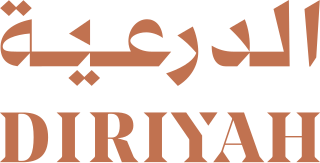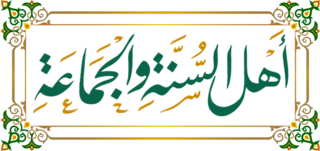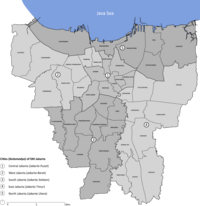
Muḥammad ibn ʿAbd al-Wahhāb ibn Sulaymān al-Tamīmī (1703–1792) was a Sunni Muslim scholar, theologian, preacher, activist, religious leader, jurist, and reformer, who was from Najd in central Arabia and is considered as the eponymous founder of the Wahhabi movement. His prominent students included his sons Ḥusayn, Abdullāh, ʿAlī, and Ibrāhīm, his grandson ʿAbdur-Raḥman ibn Ḥasan, his son-in-law ʿAbdul-ʿAzīz ibn Muḥammad ibn Saʿūd, Ḥamād ibn Nāṣir ibn Muʿammar, and Ḥusayn āl-Ghannām.

Wahhabism is a religious revivalist movement within Sunni Islam named after the 18th-century Hanbali scholar Muhammad ibn Abd al-Wahhab. It was initially established in the central Arabian region of Najd and later spread to other parts of the Arabian Peninsula, and is today followed primarily in Saudi Arabia and Qatar.

Najd is the central region of Saudi Arabia, in which about a third of the country's modern population resides. It is the home of the House of Saud, from which it pursued unification with Hejaz since the time of the Emirate of Diriyah.

The Salafi movement or Salafism is a revival movement within Sunni Islam, originating in the late 19th century and influential in the Islamic world to this day. The name "Salafiyya" is a self-designation, to call for a return to the traditions of the "pious predecessors", the first three generations of Muslims, who are believed to exemplify the pure form of Islam. In practice, Salafis claim that they rely on the Qur'an, the Sunnah and the Ijma (consensus) of the salaf, giving these writings precedence over what they claim as "later religious interpretations". The Salafi movement aimed to achieve a renewal of Muslim life, and had a major influence on many Muslim thinkers and movements across the Islamic world.
Abdulaziz bin Muhammad Al Saud was the second ruler of the Emirate of Diriyah. He was the eldest son of Muhammad bin Saud and the son-in-law of Muhammad bin Abdul Wahhab. Abdulaziz ruled the Emirate from 1765 until 1803. He was nicknamed by his people as the savior of his time due to his fearless activities.

Diriyah, formerly romanized as Dereyeh and Dariyya, is a town and governorate in Saudi Arabia. Located on the northwestern outskirts of the Saudi capital, Riyadh. Diriyah was the original home of the Saudi royal family, and served as the capital of the Emirate of Diriyah under the first Saudi dynasty from 1727 to 1818. Today, the town is the seat of the Diriyah Governorate, which also includes the villages of Uyayna, Jubayla, and Al-Ammariyyah, among others—and is part of Ar Riyad Province.
The Wahhabi war, also known as the Ottoman–Saudi war, was fought from early 1811 until 1818 between the Ottoman Empire, its vassal the Eyalet of Egypt, and the Emirate of Diriyah, the First Saudi State, resulting in the destruction of the latter.

Islam is the state religion of Saudi Arabia. The kingdom is called the "home of Islam"; it was the birthplace of the Islamic prophet Muhammad, who united and ruled the Arabian Peninsula. It is the location of the cities of Mecca and Medina, where Prophet Muhammad lived and died, and are now the two holiest cities of Islam. The kingdom attracts millions of Muslim Hajj pilgrims annually, and thousands of clerics and students who come from across the Muslim world to study. The official title of the King of Saudi Arabia is "Custodian of the Two Holy Mosques"—the two being Al-Masjid al-Haram in Mecca and Al-Masjid al-Nabawi in Medina—which are considered the holiest in Islam.
Muḥammad ibn Ali ibn Muḥammad ibn Abd Allah, better known as al-Shawkānī (1759–1834) was a prominent Yemeni Sunni Islamic scholar, jurist, theologian and reformer. Shawkani was one of the most influential proponents of Athari theology and is respected as one of their canonical scholars by Salafi Muslims. His teachings played a major role in the emergence of the Salafi movement. Influenced by the teachings of the medieval Hanbali scholar Ibn Taymiyya, Al-Shawkani became noteworthy for his staunch stances against the practice of Taqlid, calls for direct interpretation of Scriptures, opposition to Kalam as well as for his robust opposition to various folk practices which he condemned as shirk (idolatry).
Rabeeʿ bin Hādī ʿUmayr al-Madkhalī is a Saudi Muslim scholar who is the eponym of the Madkhali strain of Salafism, which is influenced by his teachings. He was formerly a professor at the Islamic University of Madinah, where he headed the Sunnah Studies Department. He was most active in the 1990s and early 2000s. He was praised by fellow Salafi scholars al-Uthaymin and Ibn Baz. Another Salafi scholar called al-Albani also praised him and described him as the leader of criticism and praise, although he himself later rejected the title. He is reverentially known as ash-Shaykh al-Allāmah among his Salafi followers, and Shaykh Dr. Khalid al-Dhafiri has described him as a Mujaddid.

The unification of Saudi Arabia was a military and political campaign in which the various tribes, sheikhdoms, city-states, emirates, and kingdoms of most of the central Arabian Peninsula were conquered by the House of Saud, or Al Saud. Unification started in 1902 and continued until 1932, when the Kingdom of Saudi Arabia was proclaimed under the leadership of Abdulaziz, known in the West as Ibn Saud, creating what is sometimes referred to as the Third Saudi State, to differentiate it from the Emirate of Diriyah, the First Saudi State and the Emirate of Nejd, the Second Saudi State, also House of Saud states.
The Al ash-Sheikh, also transliterated in a number of other ways, including Al ash-Shaykh, Al ash-Shaikh, Al al-Shaykh or Al-Shaykh is Saudi Arabia's leading religious family. They are the descendants of Muhammad ibn Abd al-Wahhab. In Saudi Arabia, the family is second in prestige only to the Saudi royal family, the Al Saud, with whom they formed a power-sharing arrangement nearly 300 years ago. The arrangement, which persists to this day, is based on the Al Saud maintaining the Al ash-Sheikh's authority in religious matters and the Al ash-Sheikh supporting the Al Saud's political authority.
Muḥammad ibn ʾIbrāhīm ibn ʿAbd al-Laṭīf ibn ʿAbd al-Raḥmān ibn Ḥasan ibn Muḥammad ibn Abd al-Wahhāb Al Shaykh Al-Tamīmī, was a Saudi Arabian religious scholar who served as the first Grand Mufti of Saudi Arabia from 1953 until his death in 1969. He is recognized as being amongst the forefront of Salafi theologians in history.
Muhammad bin Saud Al Muqrin Al Saud, also known as Ibn Saud, was the emir of Diriyah and is considered the founder of the First Saudi State and the Saud dynasty, named after his father, Saud bin Muhammad Al Muqrin. His reign lasted between 1727 and 1765.

Imam Muhammad ibn Abd al-Wahhab Mosque is the national mosque of Qatar. It is named after Muhammad ibn Abd al-Wahhab, a Sunni Muslim preacher, scholar, and theologian from the Najd region in central Arabia, founder of the Islamic revivalist and reformist movement known as Wahhabism.

Starting in the mid-1970s and 1980s, Salafism and Wahhabism — along with other Sunni interpretations of Islam favored by the Kingdom of Saudi Arabia and other Gulf monarchies — achieved a "preeminent position of strength in the global expression of Islam."

Following the embargo by Arab oil exporters during the Israeli-Arab October 1973 War and the vast increase in petroleum export revenue that followed, the international propagation of Salafism and Wahhabism within Sunni Islam favored by the conservative oil-exporting Kingdom of Saudi Arabia and other Gulf monarchies achieved a "preeminent position of strength in the global expression of Islam." The Saudi interpretation of Islam not only includes Salafiyya but also Islamist/revivalist Islam, and a "hybrid" of the two interpretations.

The Wahhabi movement started as a revivalist and reform movement in the Arabian Peninsula during the early 18th century, whose adherents described themselves as "Muwahhidun" (Unitarians). A young Hanbali cleric named Muhammad ibn ʿAbd al-Wahhab, the leader of the Muwahhidun and eponym of the Wahhabi movement, called upon his disciples to denounce certain beliefs and practices associated with cult of saints as idolatrous impurities and innovations in Islam (bid'ah). His movement emphasized adherence to the Quran and hadith, and advocated the use of ijtihad. Eventually, Ibn 'Abd al-Wahhab formed a pact with a local leader, Muhammad bin Saud, offering political obedience and promising that protection and propagation of the Wahhabi movement meant "power and glory" and rule of "lands and men".

Ahmad Zayni Dahlan (1816–1886) was the Grand Mufti of Mecca between 1871 and his death. He also held the position of Shaykh al-Islam in the Hejaz and Imam al-Haramayn. Theologically and juridically, he followed the Shafi'i school of thought.

Saudi Founding Day, officially the Founding Day, is a public holiday in Saudi Arabia celebrated annually on February 22 to commemorate the enthronement of Muhammad bin Saud as the emir of the oasis town of Diriyah in 1727 following the death of his father Saud al-Muqrin, the eponymous ancestor of the al-Saud family. His hereditary succession is considered as the prelude to the inception of the First Saudi State, the antecedent to the Second Saudi State and present-day Kingdom of Saudi Arabia. It was founded in 2022 on its 295th anniversary when King Salman bin Abdulaziz issued a royal decree that designated it as a legal holiday to be observed as per the Gregorian calendar. It is one of the three non-religious national holidays observed in the country, other being the Saudi National Day and Saudi Flag Day.










